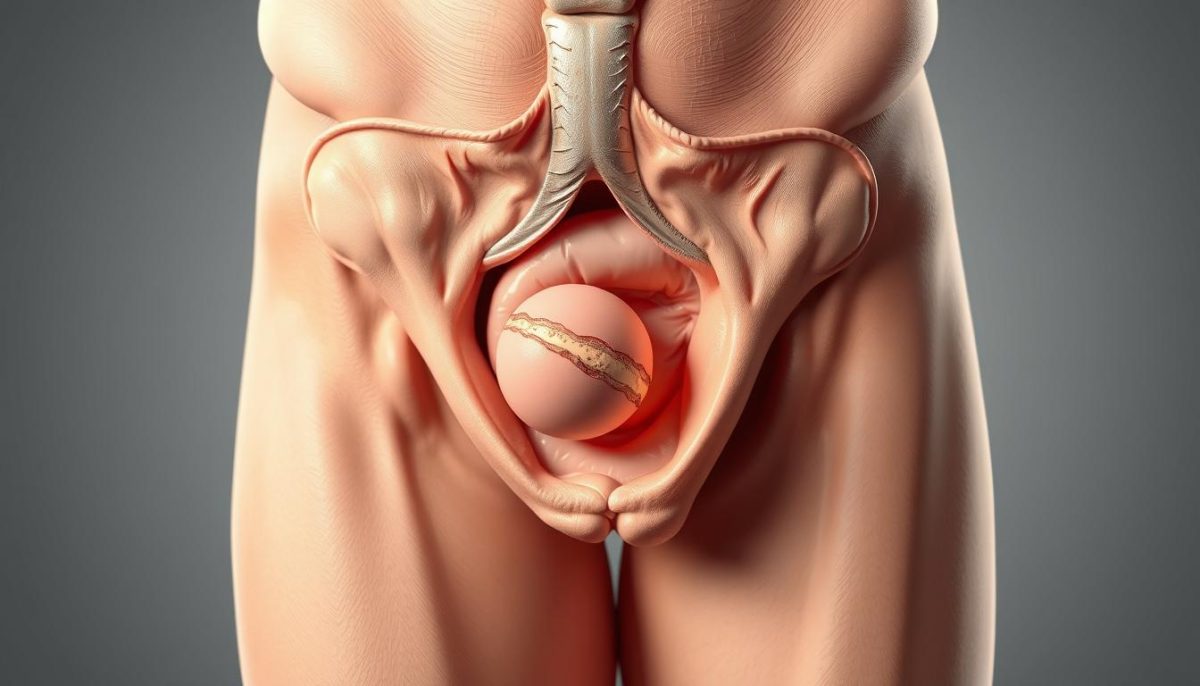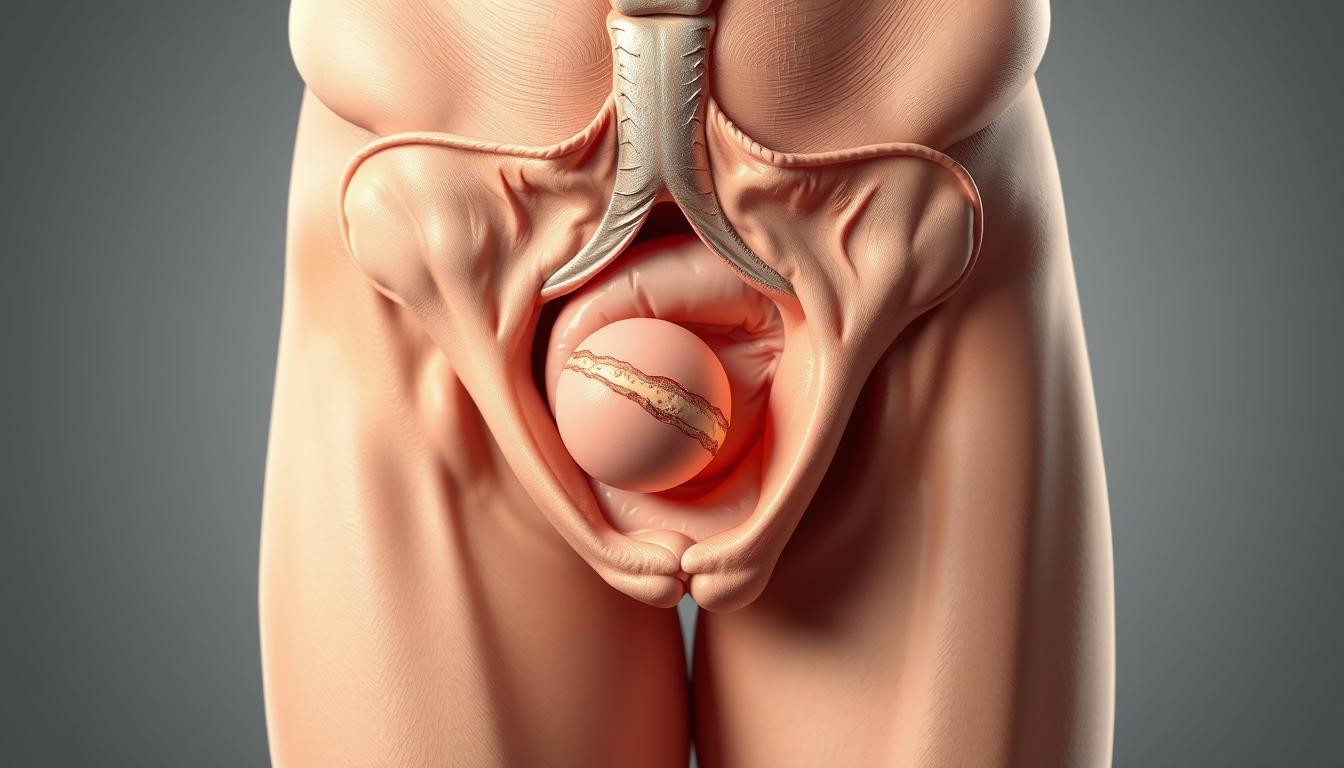Have you ever noticed a concerning lump in the area between your anus and scrotum? This perineal region, the space between these two sensitive anatomical structures, can be the site of various growths, swellings, and abnormalities that can cause discomfort and worry. As we explore the topic of perineal lumps, we’ll gain a better understanding of the common causes, symptoms, and the importance of seeking medical attention for a proper evaluation and diagnosis.
The perineal area is a complex and delicate region of the body, and any unusual growths or swellings in this area should not be ignored. While some perineal lumps may be benign and harmless, others can signify more serious underlying conditions that require prompt medical attention. By familiarizing ourselves with the potential causes and symptoms, we can be better equipped to recognize when it’s time to seek professional medical advice.
Understanding Perineal Lumps and Their Common Causes
Perineal lumps, the growths that appear between the anus and scrotum, can be a source of concern for many individuals. These bumps can have a variety of causes, ranging from benign conditions to more serious health issues. It’s important to understand the different types of perineal lumps and their associated risk factors to ensure timely and appropriate medical attention.
Differentiating Between Benign and Serious Conditions
Not all perineal lumps are cause for alarm. Common benign conditions include perineal cysts, epididymal cysts, and sebaceous cysts. These types of growths are typically harmless and may not require immediate medical intervention. On the other hand, more serious conditions, such as hemorrhoids, skin tags, and genital warts, may require professional evaluation and treatment.
Risk Factors and Contributing Factors
Various factors can contribute to the development of perineal lumps. These include:
- Genetic predisposition
- Excessive friction or irritation in the perineal area
- Poor hygiene or inadequate cleaning of the genital region
- Underlying medical conditions, such as diabetes or weakened immune system
- Hormonal imbalances or changes
Common Symptoms Associated with Perineal Lumps
Perineal lumps can present with a range of symptoms, including:
- Visible swelling or protrusion in the perineal area
- Discomfort or pain during bowel movements or sexual activity
- Itching, burning, or irritation in the affected area
- Discharge or bleeding from the lump
- Changes in the size or appearance of the growth over time
If you notice any concerning lumps or changes in the perineal region, it’s essential to seek medical attention for a thorough evaluation and appropriate treatment. Early diagnosis and management can help ensure your comfort and overall well-being.

Lump Between Anus and Scrotum: Medical Evaluation and Diagnosis
When a lump appears between the anus and scrotum, it’s crucial to undergo a thorough medical evaluation to determine the underlying cause. This process often involves a comprehensive physical examination, various imaging tests, and potentially a biopsy procedure. Let’s explore the steps involved in accurately diagnosing this condition.
During the initial physical examination, your healthcare provider will carefully inspect the area and assess the characteristics of the lump, such as its size, texture, and mobility. This hands-on evaluation helps to establish a preliminary understanding of the nature of the growth.
Imaging tests, such as ultrasound or magnetic resonance imaging (MRI), may be ordered to provide a more detailed view of the lump and the surrounding tissues. These non-invasive procedures allow your doctor to examine the internal structure and characteristics of the growth, which can help differentiate between various potential causes.
In some cases, a biopsy may be recommended to obtain a sample of the lump for laboratory analysis. This diagnostic procedure involves the removal of a small amount of tissue, which is then examined under a microscope to determine the specific type of growth and rule out any malignant or cancerous conditions.
Throughout the diagnostic process, your healthcare team may consult with various medical specialists, such as urologists or colorectal surgeons, to ensure a comprehensive and accurate assessment. This collaborative approach helps to establish a reliable differential diagnosis and guide the most appropriate treatment plan.
By undergoing a thorough medical evaluation, including physical examination, imaging tests, and potentially a biopsy, you can gain a clear understanding of the nature of the lump between your anus and scrotum. This information is crucial in determining the most suitable course of action for your specific condition.
“Early and accurate diagnosis is essential for ensuring the best possible outcome when dealing with a lump in the perineal region.”

Treatment Options and Medical Interventions
When it comes to addressing lumps between the anus and scrotum, we have a range of treatment options to consider. Our approach will depend on the specific nature and underlying cause of the lump, as well as the severity of your condition.
Conservative Management Approaches
For mild or benign cases, we may recommend conservative management strategies. This could include the use of topical antibiotics to treat any underlying infections, or the application of warm compresses and sitz baths to promote drainage and healing. In some instances, we may suggest watchful waiting, closely monitoring the lump to ensure it does not worsen or develop into a more serious condition.
Surgical Treatment Methods
In cases where conservative measures are not effective or the lump is more complex, we may recommend surgical intervention. Procedures such as excision, laser therapy, or cryotherapy may be utilized to remove or address the lump. Our goal is to provide a safe and effective solution while minimizing the risk of recurrence or complications.
Recovery and Follow-up Care
Regardless of the treatment approach, proper wound care and follow-up care are crucial for a successful outcome. We will provide detailed instructions on wound management, including the use of antibiotics, dressings, and sitz baths, to promote healing and prevent infection. Regular check-ups will allow us to monitor your progress and ensure the lump has been adequately addressed.









